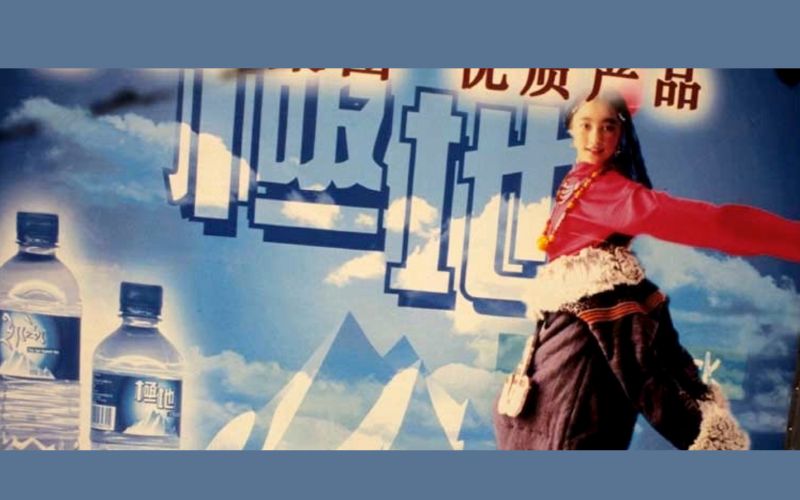
Figure 1: Ad appearing on side of delivery van in Lhasa
By Michael Buckley
Groundwater and springwater sold in plastic bottles is the biggest scam on earth. China is taking it to new heights in Tibet, by exporting Tibet’s groundwater and springwater all over China — in plastic bottles. This article synchs with the theme of solving plastic pollution, adopted as the special focus of World Environment Day, June 5, 2023. China is the biggest plastic polluter on the planet—by some accounts responsible for a third of global plastic waste. #beatplasticpollution
The ad emblazoned on the side of a delivery van in Lhasa shows a young Tibetan nomad woman — promoting a Chinese brand of bottled water sourced from Tibet. Bottled water from Tibet is considered the most clean and pristine in China. The bottled water targets Chinese users, but increasingly targets Tibetans themselves. That’s because Tibet’s once-pristine rivers are no longer trustworthy. Pollution from rampant Chinese mining ventures has rendered some sections of rivers dangerous, with yaks dying from tainted water. Basically, this is a case of Chinese entrepreneurs stealing groundwater from Tibet and selling it back to Tibetans, who previously got it for free.
The once-proud and self-sustaining nomads of Tibet have been reduced to begging. Forcibly removed from their traditional grazing lands to make way for so-called ‘nature reserves,’ the nomads have been settled in concrete ghettoes. Here, they are entirely reliant on the Chinese government’s meagre subsidies—which go primarily toward buying necessities like yak milk, cheese and butter. And tea. And bottled water. Except for the tea, all of these were available for free to nomad yak-herders. They would camp near rivers, lakes or other water sources to fetch their own water. Now they are reduced to buying water that Chinese entrepreneurs are bottling by tapping into Tibet’s abundant groundwater and springwater.
Game Changer: the Lhasa Railway

Figure 2: Nomads on train: Extra-happy nomads being served some bottled water, aboard the new Lhasa-Nyingchi train, the day it was inaugurated, in June 2021.
Tibet’s immense reserves of groundwater were never exploited until the Chinese invasion of Tibet. And not on any scale until 2006, with the arrival of the railway from Golmud to Lhasa. The railway link makes the export of Tibet’s bottled water to Shanghai and Beijing economical—and a highly lucrative trade.
Starting out in 2006 with a few water bottlers on the plateau, the number of enterprises ballooned to almost 30 operators by 2014, encouraged by tax breaks and heavy subsidies from the State. In 2014, the regional government of Tibet signed contracts with 16 major companies to expand the water bottling industry, under an initiative called ‘Sharing Tibet’s Water with the World.’ Facts and figures are hard to come by. In 2017, Xinhua News reported that 800,000 tonnes of water was bottled in Tibet, in an industry employing 20,000 workers, with income generation of $223 million.
By 2025, the target is to produce 10 million tonnes of bottled water, an exponential increase. And an eco-disaster in the making for Tibet. There is absolutely no need to share Tibet’s water with the world: all that is happening here is sharing China’s plastic pollution with mass-production of plastic in Tibet.
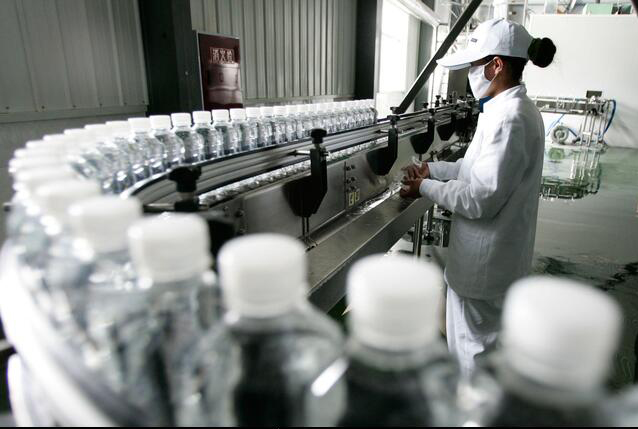 Figure 3: Bottling water at a plant at Dangxiong, near Lhasa
Figure 3: Bottling water at a plant at Dangxiong, near Lhasa
The Chinese water bottlers in Tibet are poorly regulated: they rarely provide any data on sustainability and environmental impact. It is not known what effect this extensive groundwater extraction has on surrounding flora and fauna, let alone permafrost disturbance. What is known is that the groundwater and springwater are being extracted at highly unsustainable levels. Groundwater is regarded as a non-renewable resource because it can take hundreds of years to regenerate.
It is known that some water bottlers are operating within the boundaries of the so-called nature reserves, such as Sanjiangyuan National Nature Reserve. Apart from direct impact on Tibet’s groundwater and springwater, there is infrastructure impact to consider: the industry requires bottling facilities, transport network, and the manufacture or import of the plastic bottles themselves. Tibet is under siege from rampant mining extraction by Chinese State-owned companies, and its rivers are blocked by Chinese megadams. Groundwater extraction for bottled water makes matters much worse. And the Tibetan people see little benefit from this water extraction: no royalties, few jobs.
Because Tibet’s bottled water comes from remote pristine locations, Tibet brands appeal to wealthy buyers as a status symbol, selling at up to three times the cost of other brands in China. To identify the bottled water as Tibet-sourced, the north face of Mount Everest has emerged as an iconic logo. Half a dozen brands carry a graphic or photo of Mount Everest, implying that the mountain’s glaciers are being tapped into for production. One brand, Qomolangma Glacier Company, in fact taps water just 80km away from Everest Basecamp, inside what should be a national nature reserve. There is some evidence that water bottlers in other regions are tapping from the tongues of glaciers, which is definitely not good for the environment.
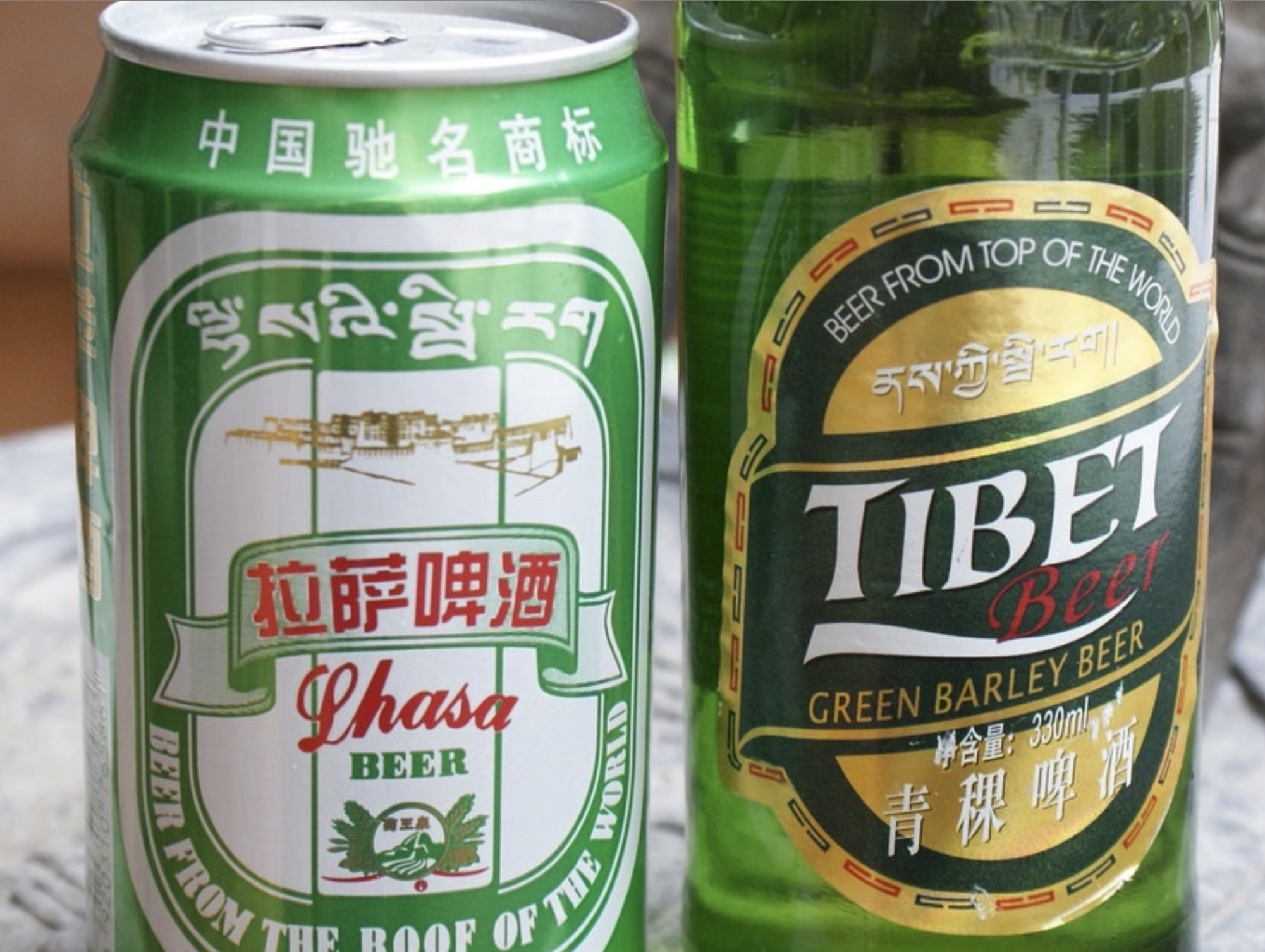 Figure 4: Lhasa Beer is produced in Lhasa in a joint-venture with Carlsberg. At right is Tiandi Tibetan Barley Beer, made by Tibet Water Resources Ltd
Figure 4: Lhasa Beer is produced in Lhasa in a joint-venture with Carlsberg. At right is Tiandi Tibetan Barley Beer, made by Tibet Water Resources Ltd
Bottled water is not the only industry sucking up Tibet’s groundwater and springwater at a rapid rate. Tibet Water Resources Ltd is the maker of Tiandi Tibet Green Barley Beer, which uses Tibetan barley, and springwater sourced near Lhasa. Another Tibetan-barley-based beer is Lhasa Beer, made by Lhasa Brewing Company in a joint-venture with Danish company Carlsberg. Lhasa Beer is exported internationally in bottles and cans.
5100 Brand
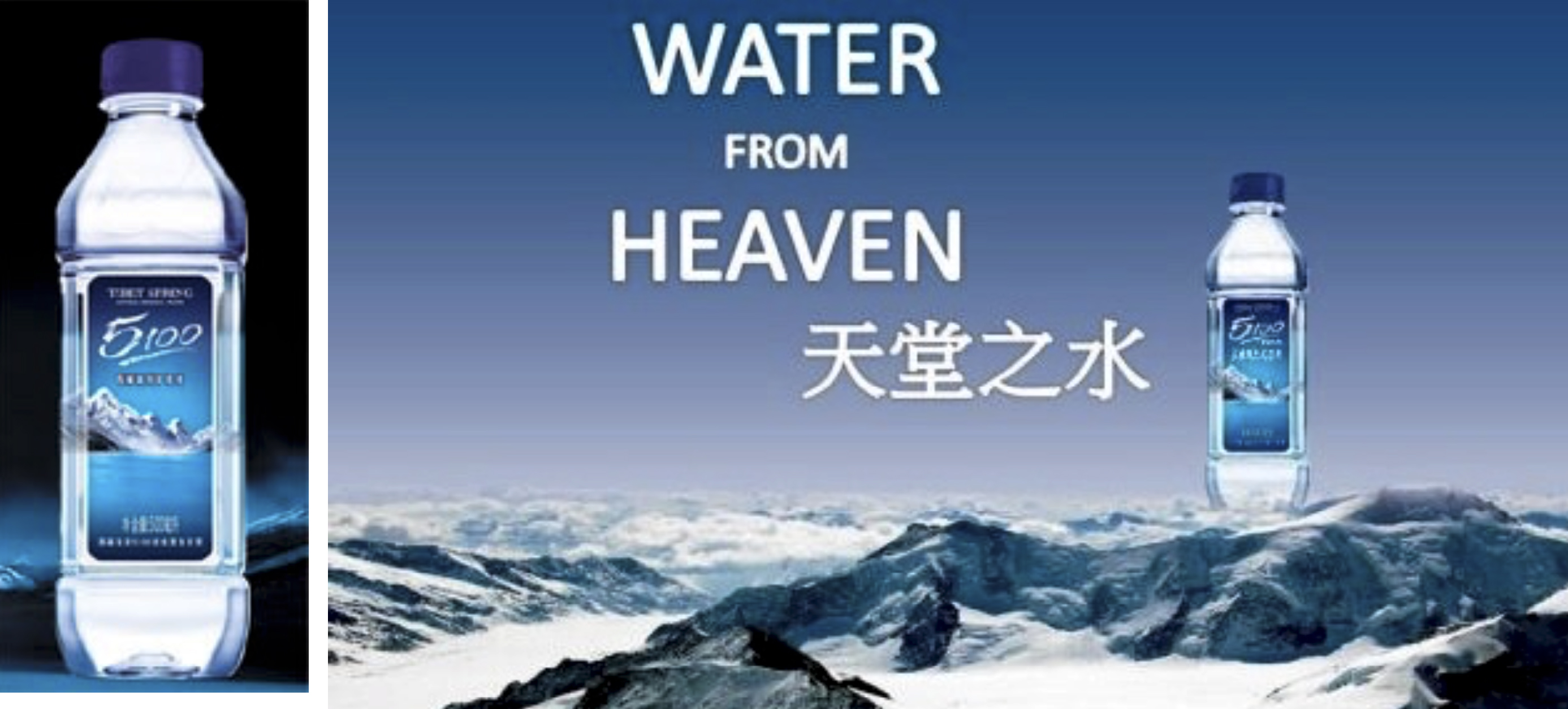 Figure 5: Ad for 5100, China’s premier luxury-brand bottled water
Figure 5: Ad for 5100, China’s premier luxury-brand bottled water
China’s most prestigious brand of bottled water is 5100, named after the supposed elevation in metres of the springwater extraction site in Tibet. The premium mineral water brand is produced by Tibet Water Resources Ltd. It is China’s equivalent of Perrier, and is served up at State functions. In fact, Tibet Water Resources has strong ties with China’s Communist Party, with state subsidies of US$50 million given to the water bottler mentioned for its first decade of operation.
 Figure 6: Free Tibet and other Tibet support groups took their message to the doors of Liverpool Football Club.
Figure 6: Free Tibet and other Tibet support groups took their message to the doors of Liverpool Football Club.
China's its beady eyes on exporting this brand abroad. The first major marketing campaign was in Hong Kong, where 5100 was advertised on taxis and billboards and showed up in supermarkets all over the city. But 5100 ran into some major obstacles in its bid to become a global brand. First, its lucrative partnership with China Railway Corporation, with bottles of 5100 served up on trains across China, was axed in 2015 after falling foul of anti-corruption investigators. In 2017, Tibet Water Resources turned up as the official bottled water sponsor of Liverpool Football Club, but ran into a stiff campaign mounted by Tibet-support groups in the UK. A year later Liverpool FC dropped the brand. In November 2019, shares of Tibet Water dropped by two-thirds on the stock exchange in Hong Kong, after accusations of fraud, and cash-flow to third parties.
The Scourge of Plastic Bottles
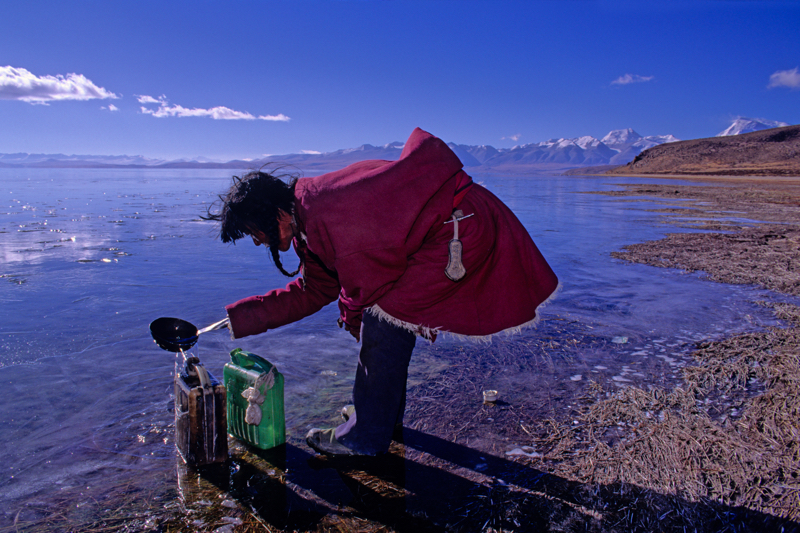 Figure 7: Mansarovar: Nomad collecting water at Lake Manasarovar, far-west Tibet. This is regarded as holy water, to be transported back for the home shrine. Tibet is rich in water resources, which were all once pristine and highly revered — lakes, rivers, groundwater, springwater.
Figure 7: Mansarovar: Nomad collecting water at Lake Manasarovar, far-west Tibet. This is regarded as holy water, to be transported back for the home shrine. Tibet is rich in water resources, which were all once pristine and highly revered — lakes, rivers, groundwater, springwater.
China is the world’s largest consumer of bottled water. There is one very good reason for this: local water sources could well be contaminated—to the point where they are dangerous. Over the past 20 years, there have been a number of cases where residents of Chinese cities have been stranded without water for several weeks due to industrial accidents or effluents, agricultural runoff and sewage. That means that overnight they become completely dependent on bottled water. Poor oversight and enforcement of water pollution standards has left some 50 percent of China’s surface and groundwater undrinkable. As for river water, people living along the Yangtse River face a terrible choice: consume the local heavily polluted water (which could lead to disease), or shoulder the high expense of bottled water.
Bottled water in China, however, is no guarantee of safety. Counterfeit water bottlers use fake labels, copycatting well-known brands. And there are plenty of bottled water scandals: one brand tested by authorities was contaminated with bacteria over 9000 times the permitted level.
China’s bottled water industry came out of nowhere in the 1990s and exploded to become the biggest in the world. According to researchers at Euromonitor, in the year 2016, China produced 73.8 billion bottles of water. That’s billion with a B. That astonishing figure represents about a quarter of the world’s water bottle production. By now, it’s more likely to be 90+ billion bottles of water a year produced in China.
The bottled water industry is one of the most polluting industries on earth—and the least regulated. Single-use plastics are particularly deadly, and that is the category that water bottles mostly fall into. One solution would be to force water bottlers to use RPet plastic, which is 100 percent recyclable. Another solution would be using plant-based bottles that are biodegradable. This method should be coming into production in the near future. But really, there needs to be a change of mentality. In Asia, bottled water is considered safer than filtered, and yet evidence suggests filtered water is healthier and more sustainable.
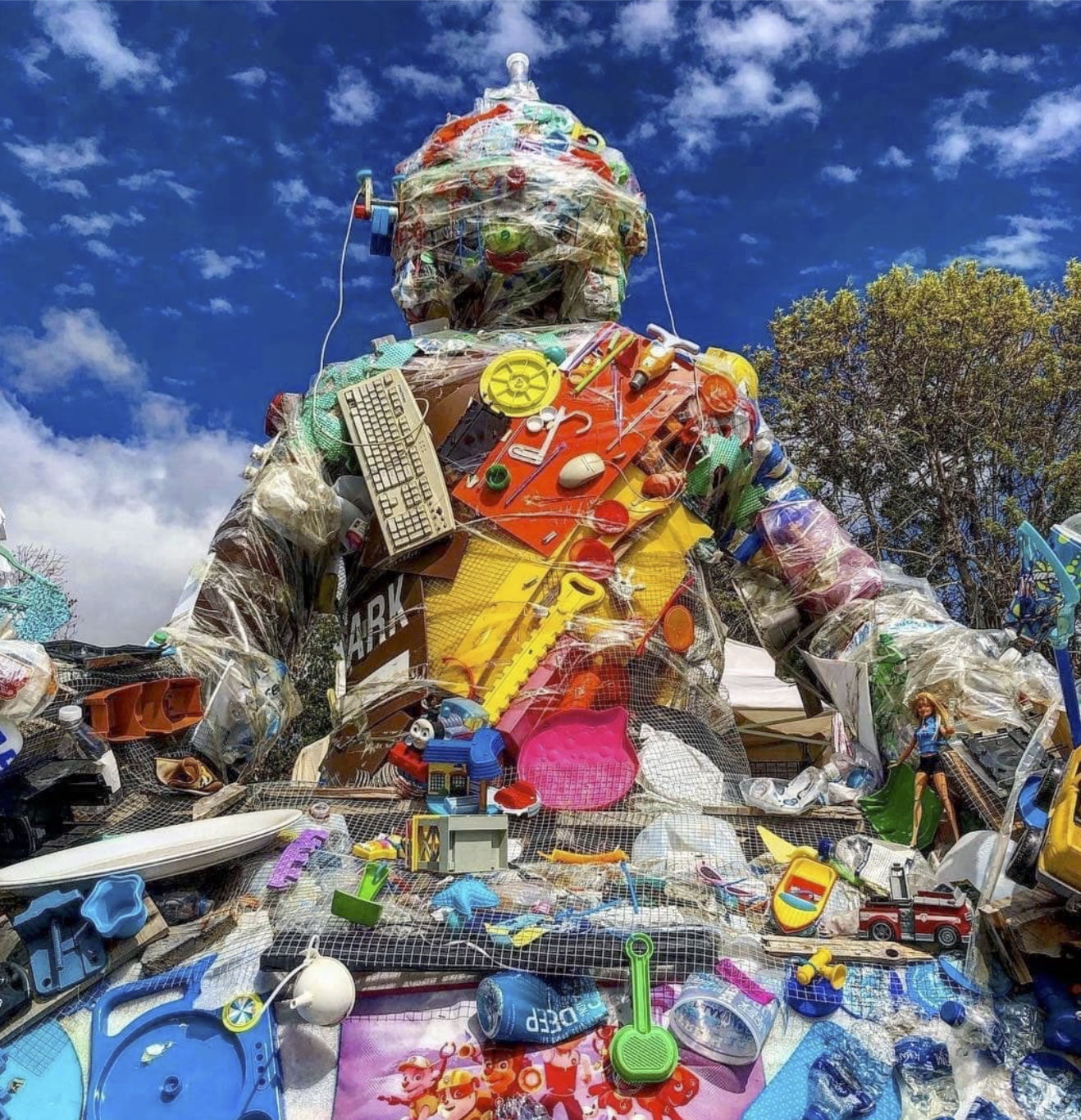 Figure 8: Plastic Soup Buddha: In November 2018, contemporary Tibetan artist Tashi Norbu visited California and created this nearly 4-metre-high sculpture out of plastic trash from the ocean— using toys, wood panels, foam mats, and plastic bottles.
Figure 8: Plastic Soup Buddha: In November 2018, contemporary Tibetan artist Tashi Norbu visited California and created this nearly 4-metre-high sculpture out of plastic trash from the ocean— using toys, wood panels, foam mats, and plastic bottles.
Plastic bottles have a huge knock-on effect downstream in the ocean. China is the biggest plastic polluter on the planet—by some accounts responsible for a third of global plastic waste. Plastic bottles could end up being recycled in China, but the amount of PET (recyclable plastic) in water bottles is low, unless the process is changed to 100-percent recyclable plastic. Plastic bottles in landfills could take up to 450 years to disintegrate. Or the bottles may float down the rivers into the ocean. It is estimated that between 4 and 12 million tonnes of plastic enters the world’s oceans each year. According to some researchers, over 80 percent of plastic pollution comes from just 10 rivers, of which 7 are sourced in China or Tibet. And the biggest culprit of all is the Yangtse River. You can bet that water bottles are a significant part of that mix — and that discarded water bottles from Tibet are floating into the ocean.
Michael Buckley is author of “Meltdown in Tibet,” and creator of a companion photo-based digital book, “Tibet, Disrupted.” He is filmmaker for four documentaries about serious environmental issues in Tibet. The most recent is 'Mekong Apocalypse,' released in 2023.